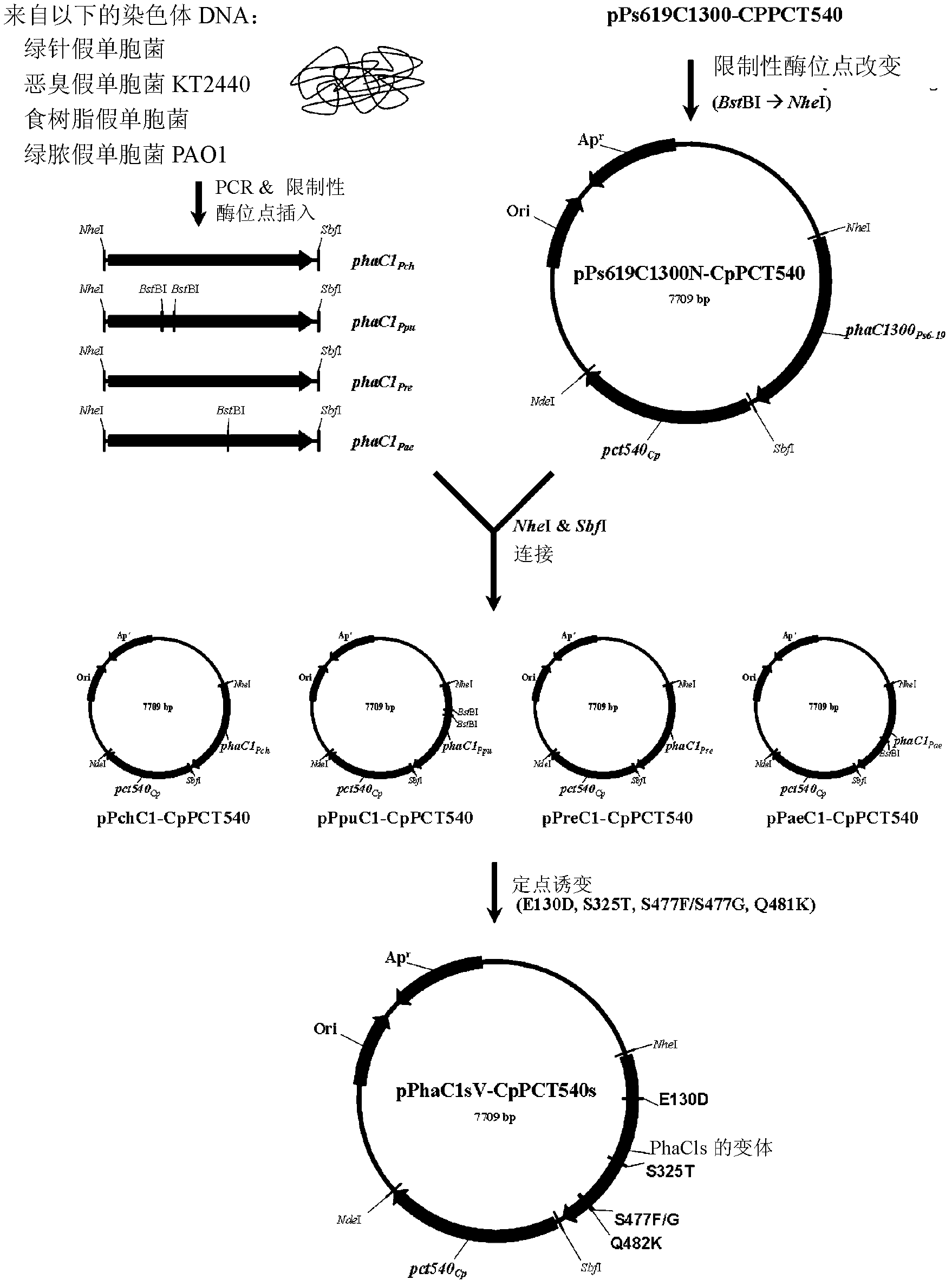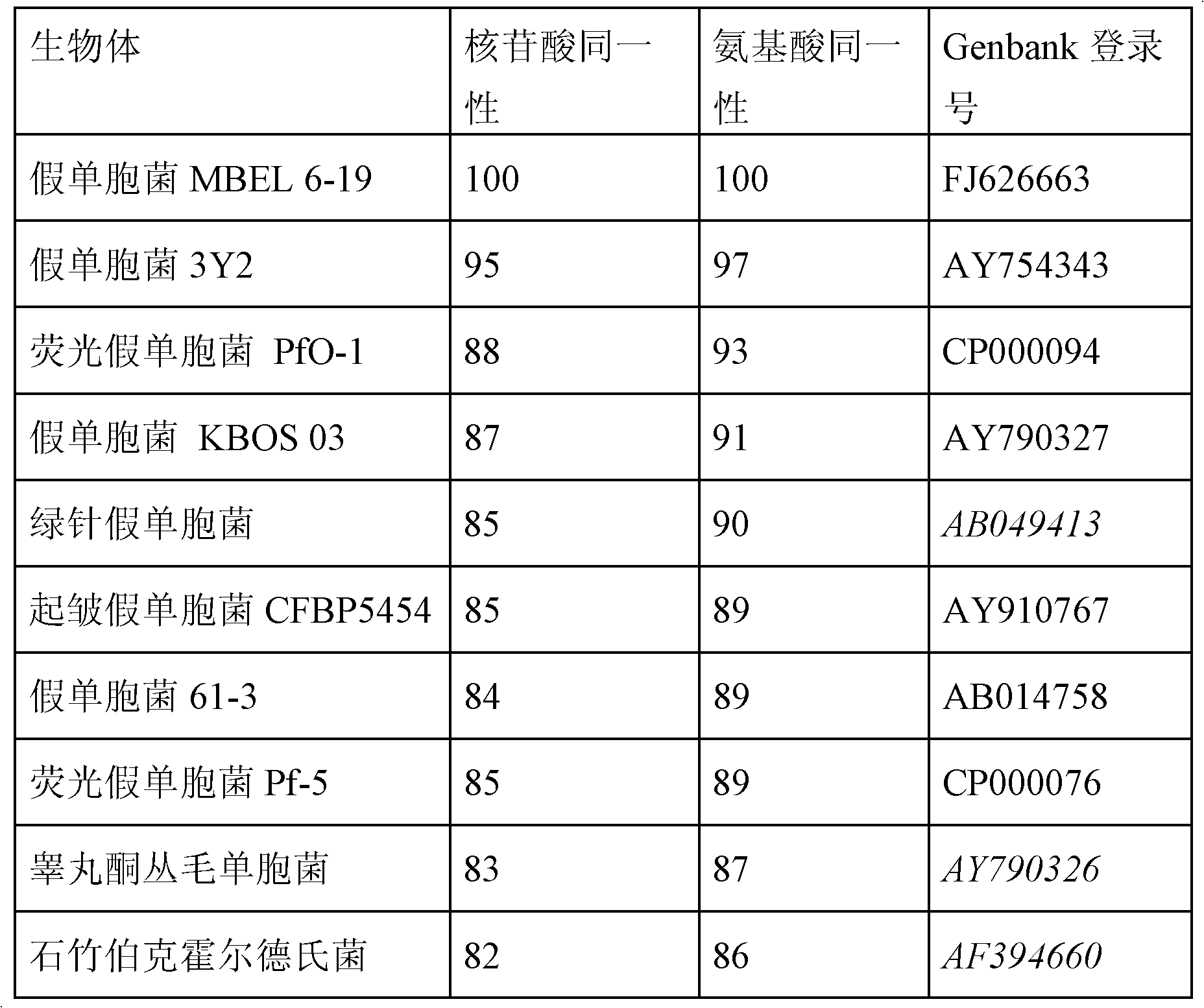Preparation method of lactate polymers and lactate copolymers using polyhydroxyalkanoate synthase mutants
A technology of polyhydroxyalkanoate and lactate, applied in the field of mutants, can solve the problems of low industrial efficiency and difficulty in synthesizing PLA copolymers
- Summary
- Abstract
- Description
- Claims
- Application Information
AI Technical Summary
Problems solved by technology
Method used
Image
Examples
Embodiment 1
[0063] Gene cloning and research of PHA synthase having high homology to the amino acid sequence of PHA synthase derived from Pseudomonas bacterium MBEL 6-19
[0064] In order to study the polyhydroxyalkanoate synthase (PhaC1) derived from Pseudomonas MBEL 6-19 (KCTC 11027BP) used in the present invention Ps6-19 ) a polyhydroxyalkanoate synthase with a high degree of amino acid sequence homology was analyzed using the Basic Local Alignment Search Tool (BLAST) provided by the National Center for Biotechnology Information (NCBI), and in the results Synthases showing relatively high amino acid sequence homology are shown in Table 1. All enzymes are included in the group of type II polyhydroxyalkanoate synthases, which are medium chain length (MCL) enzymes used to polymerize substrates with relatively long carbon chains. - PHA synthase.
[0065] [Table 1] Shown with PhaC1 Ps6-19 Polyhydroxyalkanoate synthase with high amino acid sequence homology
[0066]
[0067]
[00...
Embodiment 2
[0093] Preparation of mutants produced by highly active lactate polymers and copolymers
[0094] Type II polyhydroxyalkanoate synthases are considered to be MCL-PHA synthases that polymerize substrates with relatively long carbon chains, and it has been reported that the synthesis of short chain length (SCL)-PHA by studying various mutations Studies on mutants with improved activity (WO08 / 062999; Takase et al., J.Biochem., 2003, 133: 139-145; Takase et al., Biomacromolecules, 2004, 5: 480-485; Matsumoto et al., 2005, Biomacromolecules, 6: 99-104; Matsumoto et al., 2006, Biomacromolecules, 7: 2436-2442).
[0095] For the present invention, the mutants shown in Table 3 below were prepared by using the SDM method with primers of SEQ ID NOS: 27 to 74 to affect the lactate polymer and Amino acid sequence mutations for the synthetic activity of copolymers were introduced into four newly produced type II polyhydroxyalkanoate synthases (PhaC1 Pch , PhaC1 Ppu , PhaC1 Pre and PhaC1...
Embodiment 3
[0150] using synthase mutants to produce lactate polymers and copolymers
[0151] In order to quantitatively analyze five kinds of wild-type type II polyhydroxyalkanoate synthases (PhaC1) prepared in Example 2 Ps6-19 , PhaC1 Pch , PhaC1 Ppu , PhaC1 Pre and PhaC1 Pae ) and its mutant lactate copolymer [P(3HB-co-LA)], at 30°C in MR medium supplemented with glucose (20g / L) and 3HB (2g / L) E. coli XL-1 Blue transformed with the recombinant expression vector (Table 3) containing the above-mentioned synthase was cultured in the flask for 4 days. The composition of the MR medium used in the present invention is listed in Table 4. The cultured bacteria were collected by centrifugation, washed three times with distilled water, and then dried in an oven at 100°C for 24 hours. The composition and content of the polymers synthesized in the stem cells were analyzed by gas chromatography, and the results are shown in Table 5.
[0152] [Table 4] Composition of MR medium for cultivatio...
PUM
 Login to View More
Login to View More Abstract
Description
Claims
Application Information
 Login to View More
Login to View More - R&D
- Intellectual Property
- Life Sciences
- Materials
- Tech Scout
- Unparalleled Data Quality
- Higher Quality Content
- 60% Fewer Hallucinations
Browse by: Latest US Patents, China's latest patents, Technical Efficacy Thesaurus, Application Domain, Technology Topic, Popular Technical Reports.
© 2025 PatSnap. All rights reserved.Legal|Privacy policy|Modern Slavery Act Transparency Statement|Sitemap|About US| Contact US: help@patsnap.com



